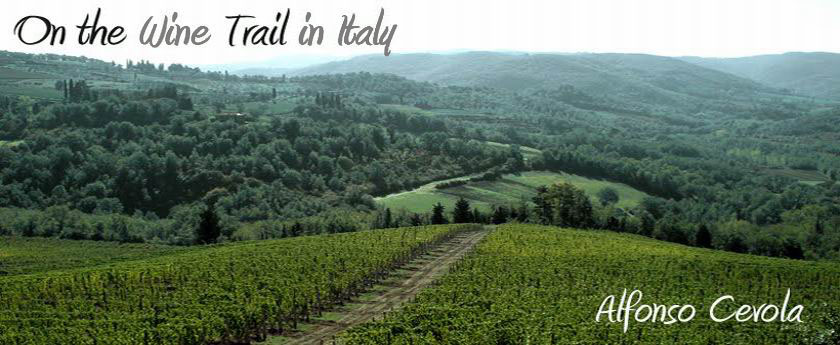There will always be a large commercial aspect to wine in California and other places in the world where wine is part of the commerce of the country. France, Spain and Italy come to mind. Italy has had, for some time, a robust commercial side of wine. A recent visit to the 51st edition of Vinitaly showed just how vigorous that business still is.
But there are also those souls who look not to quantity of production as their barometer. There are those who look to provide wholesome and tasty wines that are not necessarily in the commercial mainstream of Italian wine. As in California, where people are often looking to break out of the expected mold of expression, so in Italy, it is almost expected that a percentage of winemaking will deter from the conventional. Is this what Bonné might call the New Italian Wine?
I’m a bit torn about this, for I see people and winemakers who would not want themselves to be pigeonholed as either a mainstream commercialist or as a rogue inventionist. There will always be those who reject any kind of classification of their work. That’s almost de rigueur in Italian culture, from where I perch. But it is interesting to note that there is a good deal of energy being generated in the Italian counterculture of winemaking that are achieving some interesting and compelling expressions of wine. It’s an eddy along the river of this Golden Age of wine we find ourselves in Italy. But by no means is it a minor adjunct.
Look, there will always be huge production of commercial wines from the Chianti, Prosecco, Pinot Grigio and Moscato categories. As well, there are also people producing wine from those areas that would fit into the New Italian Wine cast. Christian Zanatta from Cà dei Zago makes a Prosecco like no uber-industrial producer. And it is a lovely, compelling wine. One can comb the hills of Tuscany or Friuli and find people who lend their interpretation to Sangiovese or Pinot Grigio with respect, not just for large production results.
But there are people all over Italy who are ready for this revolution. I say ready, when in fact, the revolution is in full swing. Spend a week in North Eastern Sicily, Etna and Vittoria, and see that these folks are not waiting for the starting pistol.
In fact, all of southern Italy is in this mode. Aside large cantine sociale co-ops, there are these small upstarts in Calabria, in Puglia, in Campania, in Lazio, in Abruzzo. The New Italian wine might not be as “new” as the New California wine of Bonné’s tome, but it is no less exciting.
In reality it might be harder to make the case for New Italian wine, because there are so many grape varieties. While California winemaking had been dominated for so many years by Chardonnay, Cabernet, Merlot, Sauvignon Blanc and Pinot Noir, Italy has lumbered over a profusion of grapes and wine types. It might be harder to “differentiate” oneself from the typical as the mainstream was so diffuse in Italian wine culture. Someone making Gaglioppo in Italy, as they had done for many generations, might not seem as edgy as someone who finds a long-forgotten parcel of Verdelho in Eldorado County. Nonetheless, the thrill of discovery, on the wine trail in Italy, is part of what makes everything seem so new and old at the same time. But to talk to winemakers in those forgotten zones, like Arianna Occhipinti or Cataldo Calabretta is to see the old as new. Maybe that is the lesson of the New Italian wine; that what was once old is new again. From my recent travels across Italy, I am here to tell you that the revolution is alive and well.
 |
| Filippo Rizzo of Lamoresca |
written and photographed by Alfonso Cevola limited rights reserved On the Wine Trail in Italy
wine blog + Italian wine blog + Italy W




